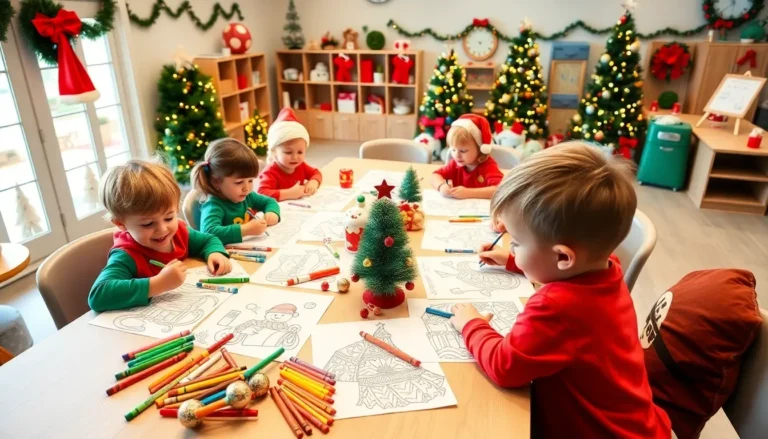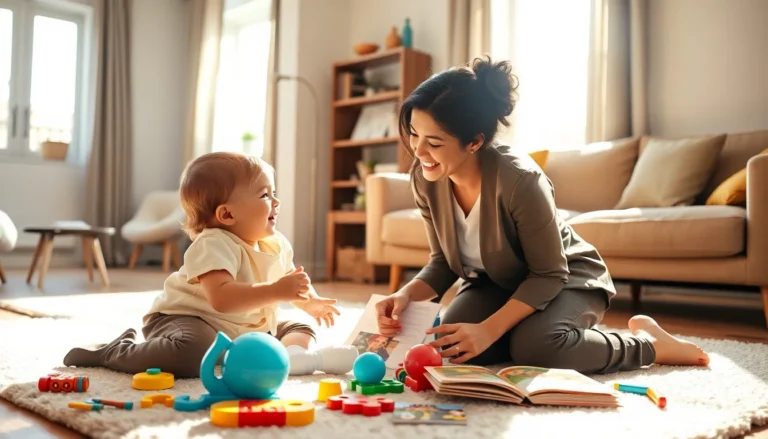Table of Contents
ToggleTeaching shapes to preschoolers might sound as simple as showing them a triangle and saying, ‘Hey, look at this. It’s a triangle.’ But in reality, this process is more like hosting a lively jam session – a mix of visuals, interactions, and perhaps a bit of playful chaos. Beyond just recognizing circles, squares, and triangles, these shapes are the building blocks of cognitive development. They help young learners see the world, make connections, and unleash their imaginations. So let’s immerse and explore why teaching shapes is not only crucial but also a lot of fun.
Understanding the Importance of Shapes in Early Childhood Education

Shapes are everywhere, from the round wheels on a toy car to the square windows on a house. In early childhood education, understanding this omnipresence is vital. Shapes act as a foundation for several key skills. First, they enhance spatial awareness. Knowing the difference between a circle and a square helps children navigate physical spaces better. Also, shapes contribute to mathematical concepts. For instance, recognizing different shapes lays the groundwork for understanding geometry later in life. Not to forget, shapes are instrumental in developing critical thinking skills. When children identify and compare shapes, they start making observations and drawing conclusions about their environment.
Then there’s the memory aspect. Using shapes also boosts memory retention. When preschoolers learn to identify shapes, they are not only memorizing but also recalling their experiences with those shapes. In this context, teaching shapes goes beyond rote memorization. It incorporates exploration, discussion, and discovery, making it an essential part of early childhood learning.
Benefits of Teaching Shapes to Preschoolers
The advantages of introducing shapes to younger learners are numerous. For one, teaching shapes encourages language development. As children learn to name various shapes, they also expand their vocabulary. This process naturally leads to discussions about sizes, colors, and the relationship between different shapes.
Also, learning about shapes helps in fine motor development. When preschoolers engage in activities like cutting out shapes or drawing them, their hand-eye coordination and dexterity improves. It’s like sneaking in a little bit of exercise while they play.
Another significant benefit lies in fostering creativity. Through shapes, kids learn to create their own art. A simple triangle can become a mountain or a cake slice. This aspect of creativity enhances their ability to think outside the box. Finally, teaching shapes lays a strong groundwork for future academic success. Math, art, and science all integrate shape recognition, making this knowledge invaluable for their educational journey.
Engaging Methods for Teaching Shapes
Teaching shapes shouldn’t be a chore: rather, it should feel like a delightful adventure. Here are several methods to make learning shapes engaging and fun.
Creative Activities to Reinforce Shape Recognition
Craft projects are a wonderful way to introduce shapes. By providing children with colorful paper and scissors, they can create their own shape collages. This hands-on activity not only reinforces shape recognition but also allows for personal expression.
Storybooks that emphasize shapes can also capture children’s attention. Books with vivid illustrations and shape-related plots can make learning become an imaginative journey.
Incorporating Technology in Shape Learning
In today’s digital age, technology can play a huge role in teaching shapes. Interactive apps designed for preschoolers can offer games and puzzles that reinforce shape recognition. These apps often use bright colors and fun sounds to keep children engaged, turning learning into play.
Interactive Play and Shape Learning
Outside of structured activities, interactive play is another enriching method. Let’s not forget about building blocks. As children stack blocks of various shapes, they unknowingly practice spatial awareness and size comparison. Group play, where children can organize their toys by shape, can also promote teamwork.
Assessing Shape Knowledge in Preschoolers
Assessment doesn’t have to be a daunting term when it comes to teaching shapes. The goal is to evaluate understanding instead of grading. One effective method is using observation. Teachers can simply watch how children interact with shapes during playtime. Are they identifying shapes correctly? Do they show an eagerness to talk about them?
Fun quizzes can also be a great way to assess knowledge without the pressure. For instance, presenting various shapes and asking, ‘Which of these is a circle?’ can make assessment feel like a game. Alternatively, incorporating arts and crafts into assessments can shine a light on a child’s understanding through creativity.
Finally, peer assessments can provide valuable insights. Kids often learn better from each other, and when they explain a shape to a friend, they reinforce their own understanding.






